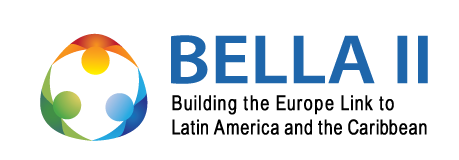The virtual Ideathon “Proactive Risk Management in the Motagua River Basin” concluded on February 20 with the selection of three winning projects proposing innovative solutions to mitigate the effects of environmental degradation in the region. Over the course of a week, more than 90 participants, organized into seven teams, developed proposals to use satellite data from the European Union’s (EU) Earth observation program, Copernicus, for water management, waste disposal, and ecosystem conservation. Five speakers, seven mentors, and pitch sessions supported the process by providing feedback and refining the solutions.
The first-place award went to Team 7, comprised of students from the University of San Carlos of Guatemala (USAC), the University of the Valley of Guatemala (UVG), and Mariano Gálvez University (UMG). Led by Laura Monroy, the team presented the initiative “Implementation of an Integrated Environmental Satellite Monitoring and Phytoremediation System to Reduce Pollutants in the Motagua River.”
The project aims to improve water quality and ecosystem health by using satellite imagery to identify contamination hotspots and applying phytoremediation techniques with native plants to restore the landscape and conserve biodiversity. The proposal involves the Ministry of Environment and Natural Resources (MARN), the Water Ministry, and the National Institute of Forests (INAB) of Guatemala. As part of their award, the team will present their project at the Motagua Forum, organized by the EU Delegation in May.
Second place was awarded to Team 4 for their proposal “Identification of Plastic Waste in the Motagua River Basin and Action Strategies Based on Copernicus Satellite Data.” The team, consisting of members from USAC’s Faculty of Engineering (FIUSAC), the University Center of Izabal (CUNIZAB), MARN, UVG, and the University Center of Nororiente (CUNOR-USAC), combined artificial intelligence and machine learning with satellite imagery to detect critical contamination points. The information generated will support regional municipalities and promote waste collection enterprises. The team will receive three specialized mentorship sessions from Copernicus to strengthen the technical aspects of their project.
Third place went to Team 6 for their proposal “Detection Systems for Sources of Contamination in the Motagua River,” comprised of students from CUNOR-USAC and FIUSAC. The project analyzes environmental indicators such as turbidity, temperature, and cyanobacteria presence, cross-referencing this data with information on human settlements, deforestation, and illegal landfills to identify contamination sources. The team will receive support from specialized professionals to further develop their proposal.
Key Impact
“RedCLARA’s leadership and Guatemala’s key role in the sustainable management of the basin are essential to advancing the recovery of this ecosystem,” stated Jorge Cabrera from Panama Centre LAC and member of the jury during the awards ceremony.
Claudia Barillas, representative of the EU Delegation in Guatemala, referred to the support that the winning team will receive: “The Motagua Forum, scheduled for next May, will be a closed high-level event with investors interested in river basin recovery projects. It will be an opportunity to bring the first-place team’s initiative to fruition,” she said.
Laura Castellana, RedCLARA’s Academic Projects Coordinator, explained that the winning teams will receive mentorship and have the opportunity to participate in a hackathon as the next step, with the possibility of accessing funding to implement their projects. Mark Urban, Director of International Cooperation, Academic Relations, and Communications at RedCLARA, highlighted that this initiative marks the beginning of projects that will contribute to improving not only the region’s environmental conditions but also its socioeconomic conditions.
Representing the mentoring team, Ana Victoria Rodríguez from MARN emphasized that “tools like Copernicus allow us to identify, monitor, and prevent environmental problems in the long term.” Additionally, Stephane Ourevitch from the EU’s Copernicus Program Support Office stressed the importance of “training experts, especially young students, in Earth observation using free, high-quality data certified by the EU.”
The Ideathon was organized by the Copernicus Academy Committee in Guatemala, composed of the National Secretariat of Science and Technology (Senacyt), the Guatemalan Advanced Network for Research and Education (RAGIE), the University of the Valley, the EU Delegation in Guatemala, the European Union’s Copernicus Program, and RedCLARA, with support from the BELLA II project, led by RedCLARA and co-financed by the EU.





